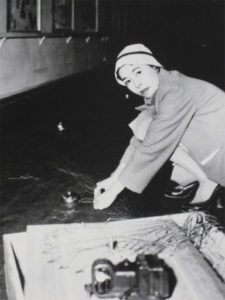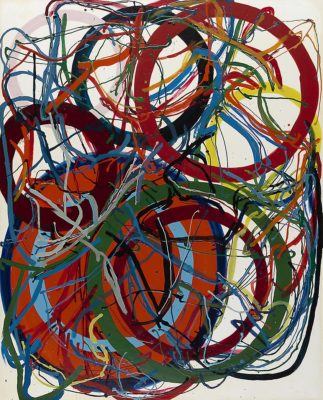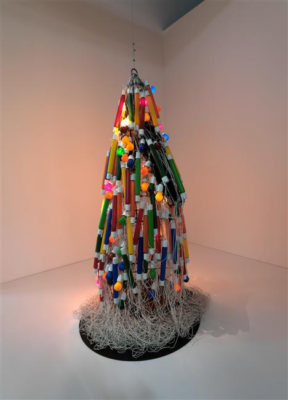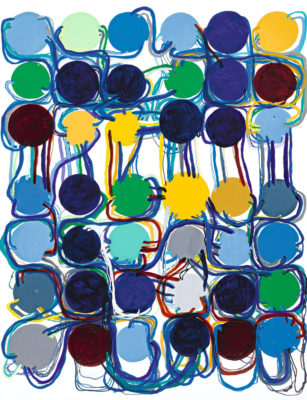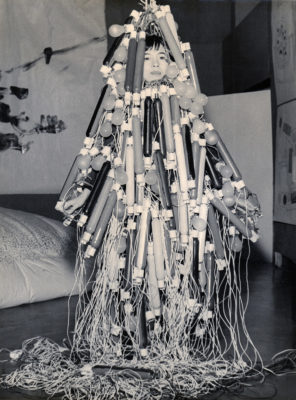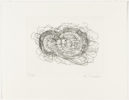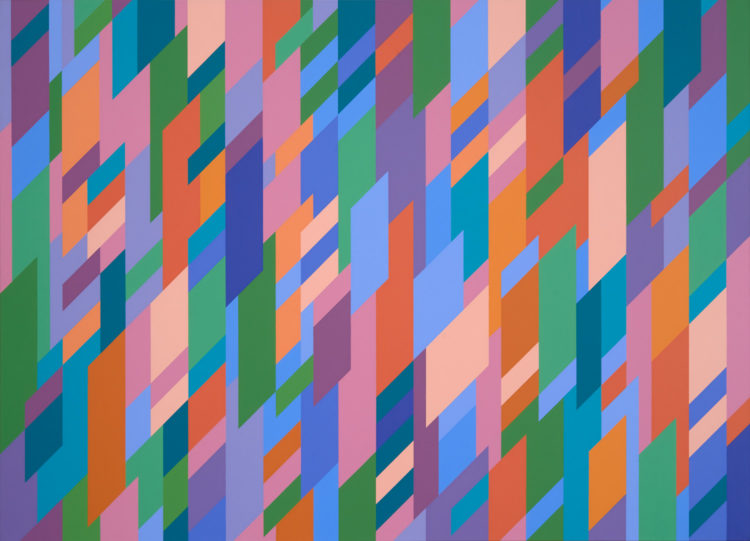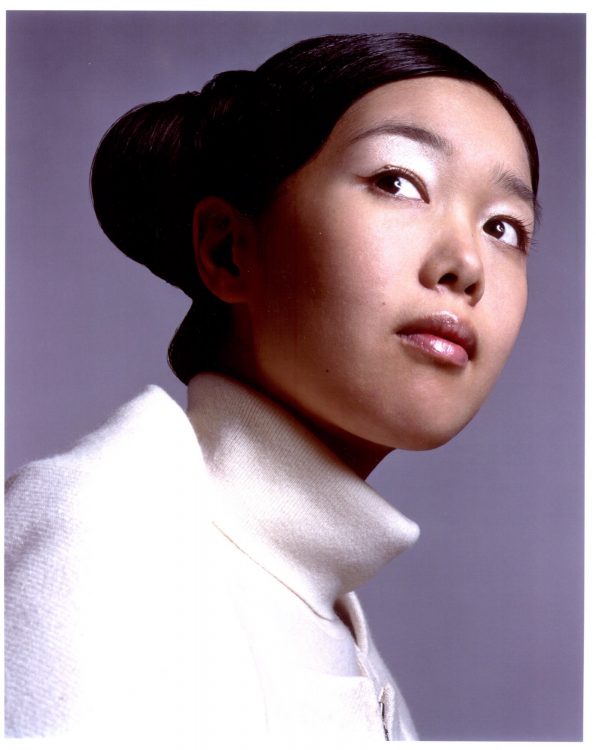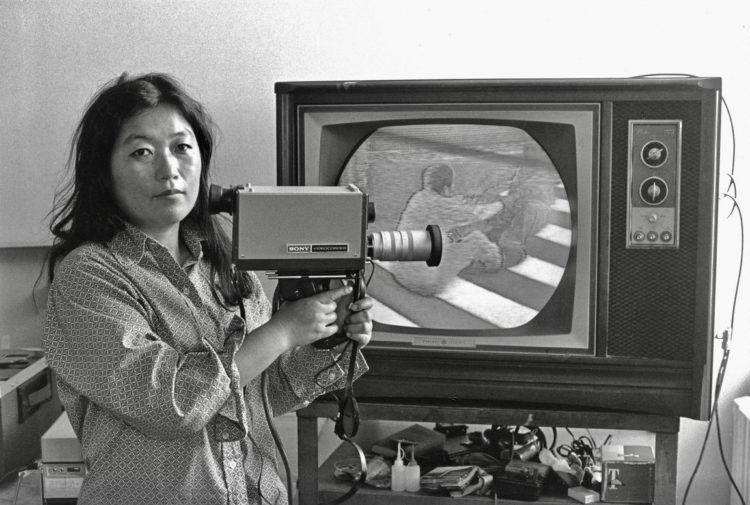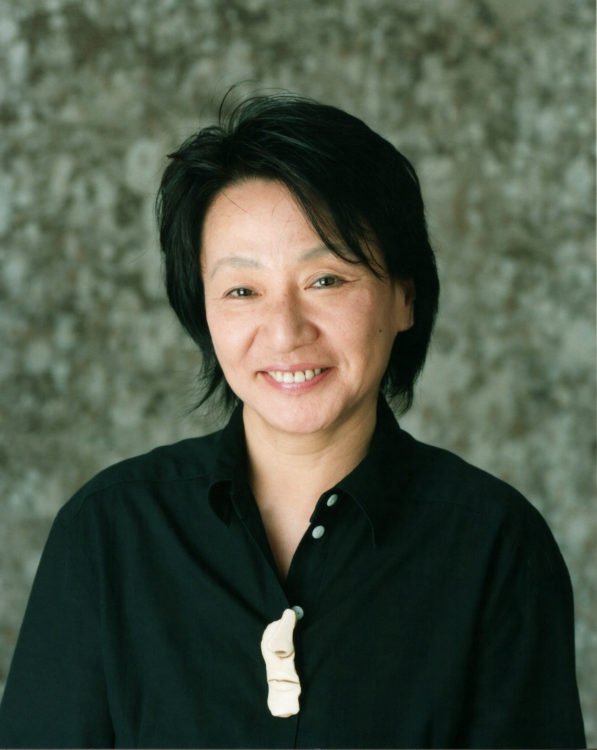Atsuko Tanaka
Namiko Kunimoto, The Stakes of Exposure: Anxious Bodies in Postwar Japanese Art, “Tanaka Atsuko and the Cricuits of Subjectivity”, Minneapolis, University of Minnesota press, 2017
→Mizuho Katō and Ming Tiampo, Electrifying art : Atsuko Tanaka, exh. cat., Vancouver, The Morris and Helen Belkin Art Gallery, New York, Grey Art Gallery, 2004
→Nabuko Ogawa et Atsuko Tanaka, ビッグ・リトル・ノブ : ライトの弟子・女性建築家土浦信子 / 小川信子, 田中厚子 [Big Little Knob : Wright’s Disciple · Female Architect Nabuko Tsuchiura / Nobuko Ogawa, Atsuko Tanaka], Tokyo Demesu Shuppan, 2001
Atsuko Tanaka, Moderna Museet, Stockholm, September 2019 – February 2020
→Atsuko Tanaka Works from the Late 1960s to 2000, Galerie Buchholz, Berlin, June – September 2018
→The Art of Connecting, Ikon Gallery, Birmingham, United Kingdom (June – September 2011) ; Museum of Contemporary Art, Tokyo, Japan (February – May 2012)
Japanese visual artist.
Atsuko Tanaka was one of the most iconic artists of the Japanese avant-garde movement Gutai in the 1950s and 1960s. Around 1954 she began her artistic practice with collages of numbers drawn in ink on paper. She was invited to join the Gutai group in 1955 by its leader Jiro Yoshihara (1905-1972). This artistic association appeared as an assembly of abstract painters who used new supports and materials for their creations. From the outset the artist exploited these new techniques. For the first Gutai exhibition, in October 1955, she created the piece Work (Bell), by arranging a series of bells that rang one after another. Approximately three months before that exhibition, she began creating outdoor works with large pieces of coloured fabric. For example, she stretched 10 square metres of bright pink silk 30 centimetres from the ground letting the cloth float in the wind and surrounding space. This piece, titled Work, was reproduced for Documenta 12 in Kassel in 2007.
Shortly after these works, A. Tanaka produced a series of costumes for the Gutai group’s theatrical performances, including the Denkifuku dress [“Electric garment”, 1956], made from electric lightbulbs and flashing light tubes, which brought her worldwide fame, and which she herself wore during the second Gutai exhibition in October 1956. This piece represents one of the first examples of the use of electricity in art. The artist explained having been fascinated by a neon light in a pharmacy in Osaka that revealed the beauty of artificial coloured light to her. By slipping into the dress as a second skin, she highlighted the relationship between the feminine body and its envelope, thus anticipating feminist discourse of the 1960s. In 1986 the work was recreated for the exhibition Le Japon des avant-gardes. 1910-1970 at the Centre Georges Pompidou in Paris. The drawings she made based on the Denkifuku foreshadowed a truly original pictorial approach in which the electric circuit and the lights were replaced by coloured circles and lines, evolving towards geometric abstraction.
A. Tanaka left Gutai in 1965, and participated in the important exhibition New Japanese Painting and Sculpture which toured the United States from 1965–1967 under the auspices of the International Council of The Museum of Modern Art, New York. In 1968 she created Round in Sand, a performance during which she traced ephemeral circles and lines in sand. In 2001 a retrospective of her work was held at the Museum of Art and History of Ashiya, followed by a second exhibition at the Grey Art Gallery in New York in 2004 titled Electrifying Art: Atsuko Tanaka, 1954-1968. In 2013 her most important works were shown in the exhibition Gutai: Splendid Playground at the Guggenheim in New York.
© Éditions des femmes – Antoinette Fouque, 2013
© Archives of Women Artists, Research and Exhibitions, 2021



